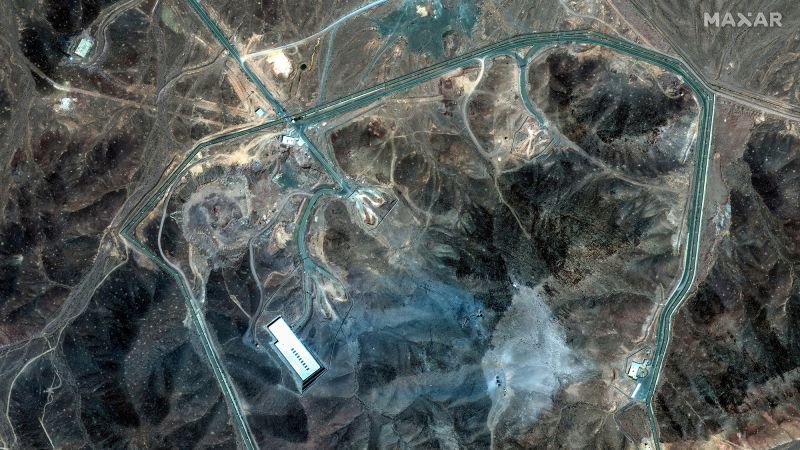The recent US military strikes on Iranian nuclear facilities have sparked intense debate. While initial reports suggested a complete obliteration of Iran’s nuclear capabilities, a new US intelligence assessment paints a different picture. According to sources briefed on the assessment, the strikes may have only set back Iran’s nuclear program by a few months, raising questions about the mission’s true effectiveness.
This article delves into the details of the intelligence assessment, exploring the discrepancies between official statements and the actual damage inflicted. We’ll examine the assessment’s findings, the White House’s response, and the broader implications for regional stability. This situation underscores the complexities of assessing military impact and the challenges in verifying claims in international conflicts.
Early Intel Assessment: Limited Impact on Iran’s Nuclear Program
An early US intelligence assessment indicates that the strikes on Iran’s nuclear facilities did not destroy the core components of the country’s nuclear program. The assessment, described by multiple sources, suggests the strikes likely only set the program back by months.
This assessment, produced by the Defense Intelligence Agency (DIA), is based on a battle damage assessment conducted by US Central Command. The initial findings contrast with President Donald Trump’s claims that the strikes “completely and totally obliterated” Iran’s enrichment facilities. Secretary of Defense Pete Hegseth had also stated that Iran’s nuclear ambitions “have been obliterated.”
According to two sources familiar with the assessment, Iran’s stockpile of enriched uranium was not destroyed, and centrifuges remain largely intact. One source noted intelligence suggesting enriched uranium was moved before the strikes, implying preparedness on Iran’s part.
White House Disagreement and Claims of Leaks
The White House has acknowledged the existence of the intelligence assessment but strongly disputes its conclusions. Press Secretary Karoline Leavitt condemned the leak of what she described as a “top secret” document to CNN, accusing an anonymous, low-level source within the intelligence community of trying to undermine President Trump.
Leavitt asserted that the assessment was “flat-out wrong” and defended the mission as “perfectly executed,” reiterating the claim of total obliteration. President Trump, attending the NATO summit in the Netherlands, echoed this sentiment, stating the nuclear sites in Iran were “completely destroyed!”
These strong denials from the White House highlight the significant divergence in perspectives and the high stakes involved in accurately portraying the outcome of military actions.
Military’s View: Overwhelming Success or Premature Assessment?
Despite the White House’s firm stance, other voices within the military and political spheres offer a more cautious view. The US military maintains that the operation proceeded as planned and was an “overwhelming success.” However, it is acknowledged that a comprehensive picture of the strikes’ impact is still developing.
Chairman of the Joint Chiefs of Staff Dan Caine stated that it is “way too early” to definitively assess whether Iran still possesses nuclear capabilities. This statement suggests that a complete understanding of the situation requires more time and ongoing intelligence gathering.
Republican Rep. Michael McCaul, while acknowledging the strikes caused “significant damage,” admitted that the operation was “always known to be a temporary setback,” contradicting claims of complete destruction.
Israel’s Perspective: Two-Year Setback
Israel, which had been conducting its own strikes on Iranian nuclear facilities prior to the US intervention, assessed the impact of the combined military actions. While finding less damage at Fordow than anticipated, Israeli officials believe the joint efforts set back the Iranian nuclear program by two years.
This assessment assumes that Iran will be able to rebuild its program unimpeded, a scenario that Israel has vowed to prevent. The Israeli perspective suggests a more optimistic outlook than the DIA assessment, but it also acknowledges the ongoing need for vigilance and proactive measures.
Independent Analysis: Continued Underground Capabilities
Independent experts, analyzing satellite imagery and open-source intelligence, support the assessment that Iran’s nuclear program was not entirely dismantled. Jeffrey Lewis, a weapons expert at the Middlebury Institute of International Studies, pointed out that key underground facilities near Natanz, Isfahan, and Parchin remain intact.
Lewis warned that these facilities could serve as the basis for the rapid reconstitution of Iran’s nuclear program. This expert opinion highlights the potential for Iran to quickly recover its nuclear capabilities, underscoring the limitations of the strikes’ long-term impact.
Canceled Briefings and Claims of Misinformation
Adding to the controversy, classified briefings for both the House and Senate on the operation were canceled, fueling speculation about the true extent of the damage and the White House’s willingness to share accurate information. Rep. Pat Ryan criticized Trump for canceling the House briefing, alleging the administration couldn’t back up claims of complete destruction.
The cancellation of these briefings raises concerns about transparency and accountability, prompting questions about the administration’s motives in controlling the narrative surrounding the strikes.
Bunker-Buster Doubts and Alternative Strategies
Questions have long persisted about the effectiveness of the US’ bunker-buster bombs, known as Massive Ordnance Penetrators (MOPs), against Iran’s deeply buried nuclear sites. It has been reported that Tomahawk missiles were used to strike Isfahan as bunker-buster bombs may not have successfully penetrated Isfahan’s lower levels.
US officials also suspect that Iran maintains secret, operational nuclear facilities that were not targeted in the strikes, posing an ongoing challenge to international efforts to curb Iran’s nuclear ambitions.
Conclusion: A Complex and Uncertain Situation
The US military strikes on Iran’s nuclear facilities present a complex and uncertain situation. While the White House insists on a complete obliteration of Iran’s nuclear capabilities, intelligence assessments and expert analyses suggest a more limited impact. The strikes may have only set back Iran’s program by months, with key underground facilities remaining intact.
The discrepancies in perspectives, the cancellation of briefings, and the ongoing questions about the effectiveness of military strategies highlight the challenges in accurately assessing the situation. As the US and Iran navigate this delicate landscape, transparency, diplomacy, and a commitment to verifiable information will be crucial in preventing further escalation and ensuring regional stability.

Leave a Reply